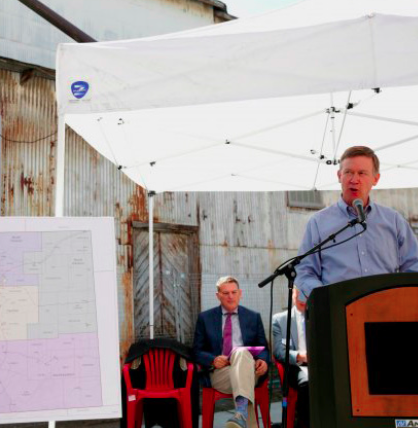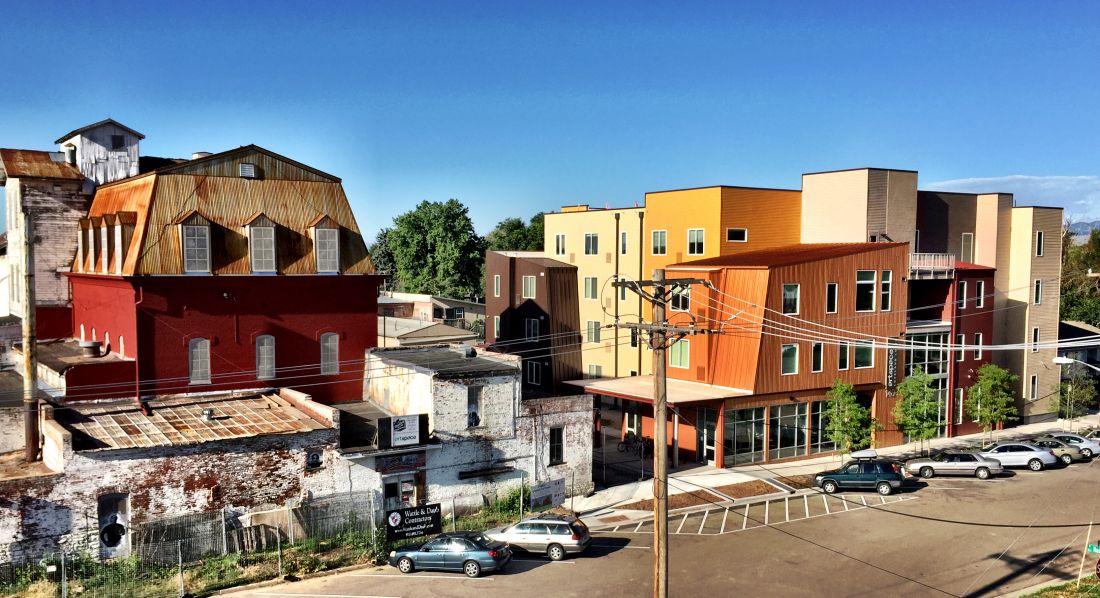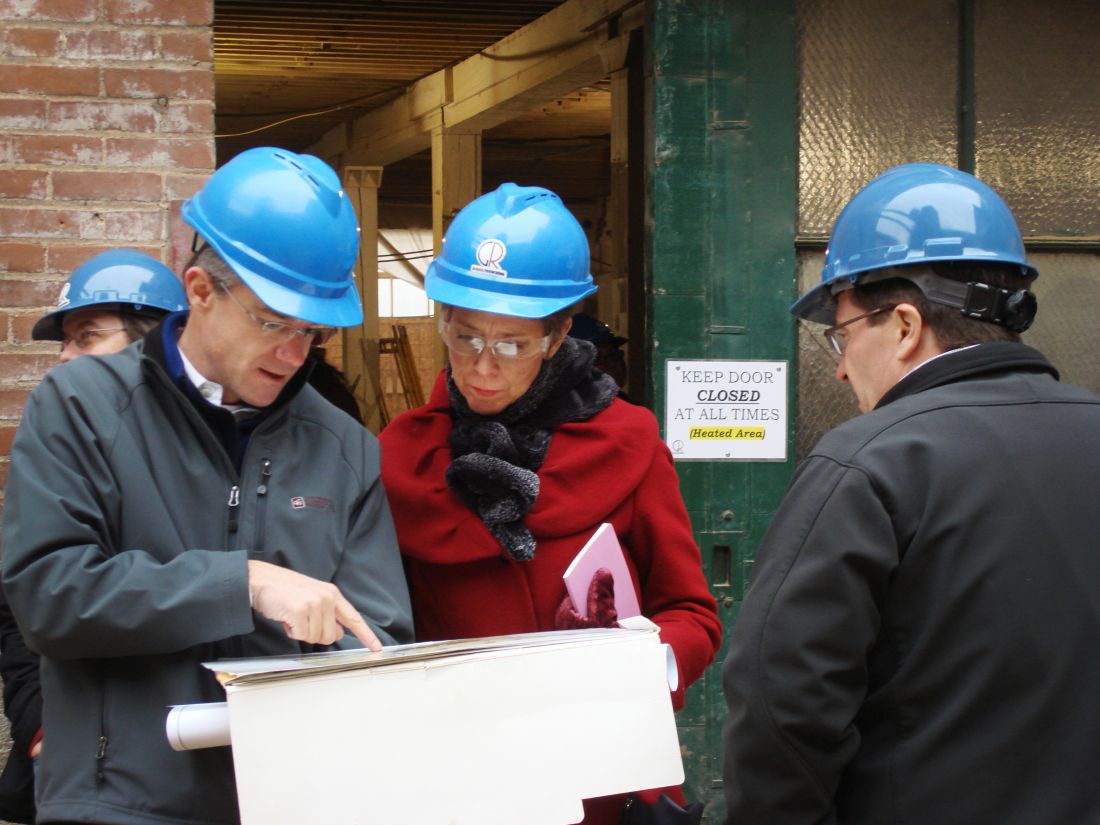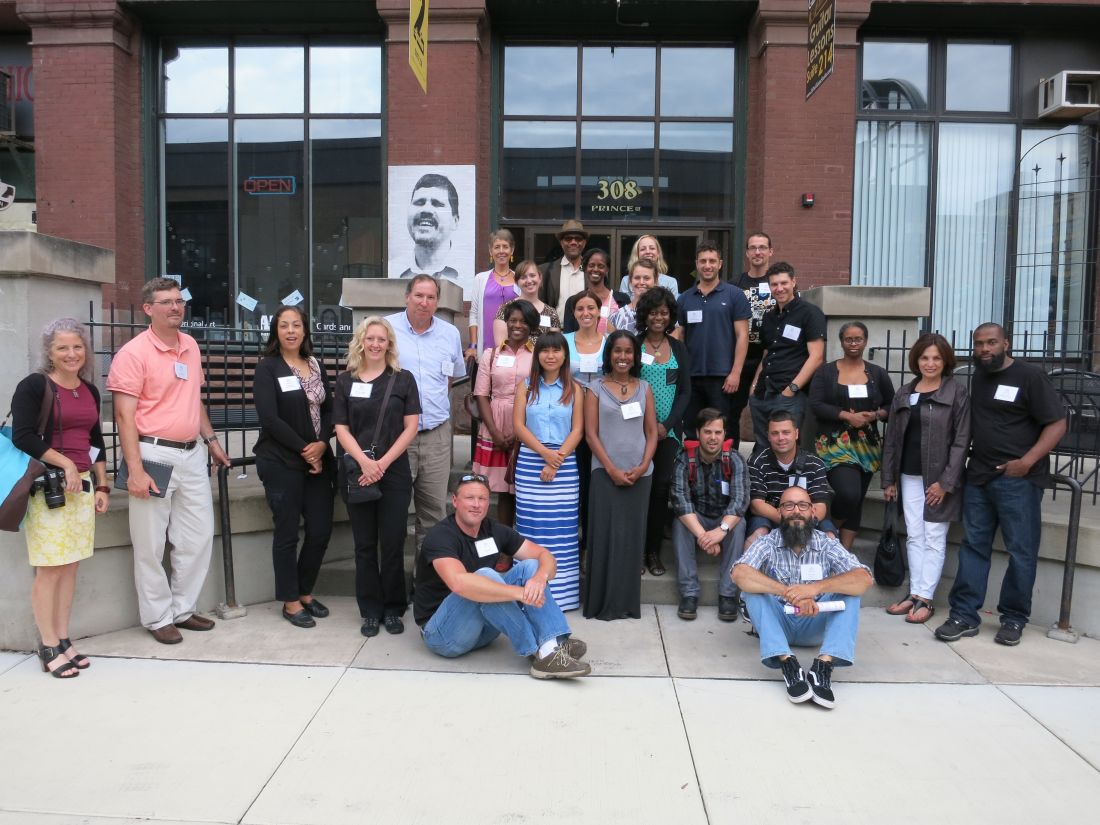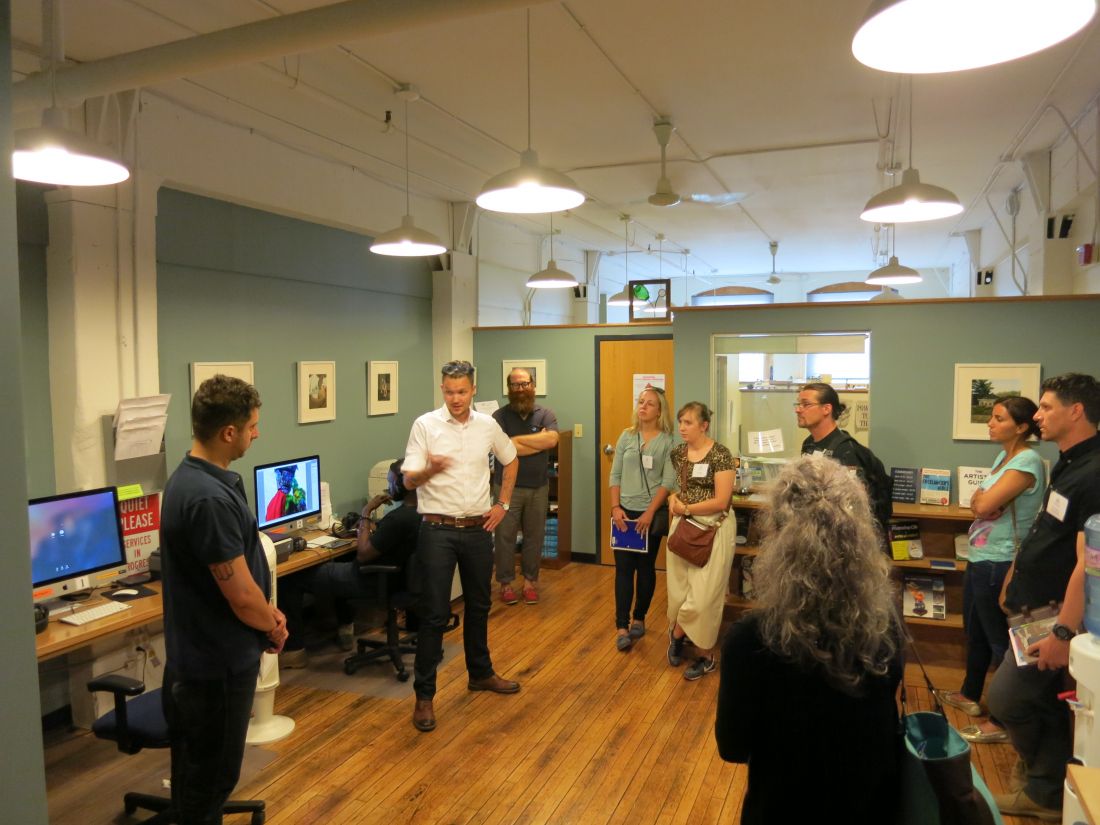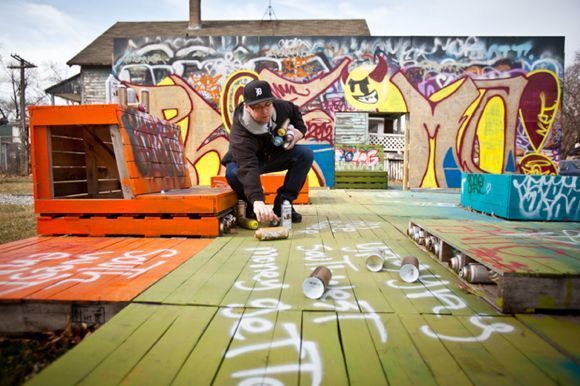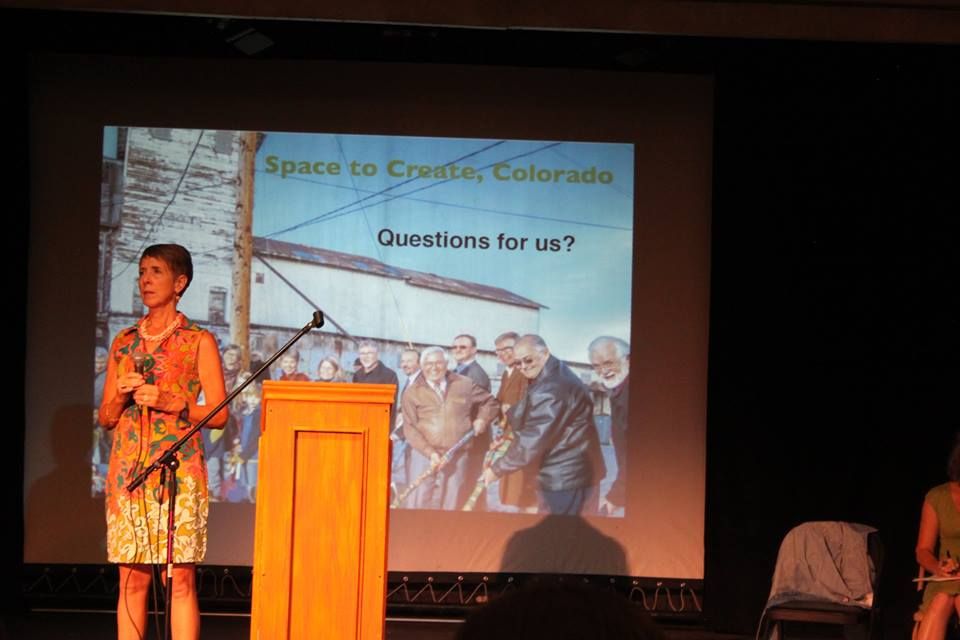ERIK HOWARD WAS IN A PANIC. The founder of The Alley Project (TAP)—a community center and gallery for youth creating street art and garage murals in Southwest Detroit—was working on an ArtPlace America Grant for Creative Placemaking. But his application had gone all wrong. “We found out late in the process that somehow we’d applied in the wrong category,” Howard recalls, “so we were improperly prepared for what we had to submit.”
Through another Detroit applicant, Allied Media Project, Howard learned about Artspace. He emailed Wendy Holmes, senior vice president of Consulting and Strategic Partnerships at the Minneapolis-based nonprofit, asking for help. “I wrote that this grant was crucial to the future of our organization and didn’t know what to do,” Howard says. After reading his email, Holmes immediately gave Howard a call.
“She asked me a series of questions and said ‘I have good news and bad news,’” Howard continues. “The good news was we’d done all the work. The bad news was we needed to put it in a new format.” Holmes gave Howard contact information for several Detroit organizations that could help. She also provided insight on TAP’s performance estimates, market research and financial analysis, and helped Howard position his language for the grant. “She was a godsend,” Howard says.
The application was a success. TAP, which is part of the Detroit-based youth-development group Young Nation, received the 2015 ArtPlace creative-placemaking grant to renovate a 2,000-square-foot building and design a plaza and green space at the intersection of Elsmere and Avis streets. Located next to TAP, the project provides a supportive, year-round space for community members, visitors and artists to make art; fosters relationships between youth, elders and other community members; and grows entrepreneurial activity—and thus socio-economic capital—in the neighborhood.
“Erik is a talented artist and a dynamic leader,” says Holmes. “He’s been working with neighborhood youth to create an outdoor gallery full of amazing murals on garage doors and in the alleyways. We were thrilled to help him refine his ArtPlace grant and build his confidence during the application process.” Neither Howard’s call for help nor Holmes’ quick response were unusual, even though Artspace is best known as America’s leading nonprofit developer of affordable artist live/work housing and arts facilities.
Cohorts and capacity building
Shortly after Howard submitted his ArtPlace application, the Kresge Foundation approached Artspace about working with several Detroit nonprofit organizations—as Holmes had done with Howard and TAP—on capacity building. Artspace recognized an opportunity to take the next step in its own evolution.
“Rather than focusing on one arts real-estate project at a time in a city,” says Holmes—which is a model Artspace pioneered—“we landed on a concept with Kresge to help build the technical skills and socio-economic capacity of a cohort of Detroit nonprofits focused on arts or social justice, neighborhood revitalization and community development. We started with their real estate challenges, but soon discovered they needed help in other areas, including fundraising and board development.”
The program, called Artspace Immersion: Detroit, includes 11 organizations: the Arab American National Museum, 555 Arts, Allied Media Project, Artlab J, Detroit Reuse Project, Inc., Bailey Park Projects, Jefferson East, Inc., Grandmont Rosedale Development Corporation, Spread Art, The Carr Center, and Young Nation-The Alley Project. In addition to workshops in Detroit, Artspace has also flown the cohort to Minneapolis to tour the facilities Artspace has developed in the Twin Cities, and discuss such topics as concept refinement, fundraising, development and asset management.
“The immersion project, thus far, has been transformative to the members of the cohort,” says Amber Elliot, a Wayne State University Detroit Revitalization Fellow, assistant program officer at LISC in Detroit, and Artspace’s local consultant for the Detroit cohort. “Artspace is a national nonprofit with a huge portfolio of experience helping our organizations think about how to better utilize their space, how to fundraise, market and position their story, and how to move their organization forward. The expertise they provide is hands-on and in-depth.”
“At the same time, these organizations are learning to come out of their shells and collaborate with each other, so the cohort project has a holistic approach,” Elliot continues. “Moreover, the project isn’t solely about art and recognition for artists. Without arts organizations you don’t have a community. So there’s a community-development component to the project. The cohort is about working together to transform communities around art, environment, health and social justice.”
A natural evolution
In addition to its roles as an arts real-estate developer, owner and manager, Artspace’s services include a consulting department for communities, organizations and individuals seeking information and advice about developing affordable housing and work space for artists, performing arts centers and cultural districts. Several years ago, Artspace tested the cohort approach by bringing together a diverse group of community leaders to cross-pollinate ideas, explains Anna Growcott, director of Consulting and Strategic Partnerships. “We’re using that same framework for the Detroit immersion project.”
Working with a cohort of organizations isn’t “that far afield from what we do in consulting already,” Holmes says, “except it’s a more efficient way of working with multiple organizations with similar needs. And it seems to be missing in many cities, particularly among arts nonprofits that don’t realize they need real estate skills until it comes into play at some point. So working on this larger, more geographic scale is a natural evolution for Artspace.”
Arguably, Artspace’s work in Minneapolis, St. Paul and throughout rural Minnesota built the firm foundation on which the development of a more geographic approach could occur. From Artspace’s first project in 1990, the Northern Warehouse Artists’ Cooperative in the Lowertown neighborhood of St. Paul, the organization’s portfolio has expanded to include more than 30 artist affordable live/work housing projects, as well as eight non-residential initiatives in the Twin Cities—including the development of the Traffic Zone Center for Visual Art in Minneapolis.
Artspace has also developed projects in Duluth and Brainerd, as well as in Fergus Falls and on the Pine Ridge Reservation in South Dakota. “We also have a high concentration of work around Chicago and in the states of New York, Colorado and Washington, and in the D.C. area, ” Holmes says. In Seattle, where Artspace has created three projects, affordable artist live/work housing is becoming the new normal. “Our work happened organically as a geographic approach in Seattle,” Holmes says.
The geographical re-scaling of the organization’s work may reach its apex in Colorado, where Artspace has not only created its first urban artist live/work project in Loveland (with projects in Lakewood and Denver to follow), but is engaged in a public/private partnership that will transform nine rural communities over the next eight years through the development of mixed-use and artist housing projects.
Space to Create Colorado (a project of Colorado Creative Industries, which in turn is a division of the Colorado Office of Economic Development & International Trade), will focus on arts-related development and housing in small rural and mountain towns. It’s the first state-driven initiative in the United States for affordable housing for artists. Artspace is the lead consultant. “All of our work in Minneapolis and St. Paul, and throughout rural Minnesota, was good training for our upcoming work in Colorado,” Holmes says.
Moving a perfected process forward
The purpose of Space to Create Colorado is to develop affordable housing and workspace for artists and arts organizations. In doing so, the organization hopes to position Colorado as a national model for artist-led community transformation in rural communities. In addition to Artspace and Colorado Creative Industries, the initial partners, led by the Colorado Office of Economic Development & International Trade, include the Colorado Department of Local Affairs, History Colorado and the Boettcher Foundation.
The demonstration project will reinforce and bring new life to an already state-designated creative district in Trinidad, Colorado. “We have secured an entire city block of historic buildings for this first rural Colorado project,” says Tim Schultz, president of the Boettcher Foundation. “On either end of the block facing Main Street are old three-story hotel and apartment buildings that would be converted into live/work spaces for artists. In the middle of the block is an old auto dealership with a barrel-shaped roof, which we’re developing into a community center that could also host festivals, dinners and theater performances, as well as a home for the Corizon de Trinidad Creative District.”
“Trinidad is fired up,” Schultz continues. “There’s a huge desire to turn the community around using the arts and creativity as a socio-economic engine. Artspace has embraced all of our needs, wants and concepts. I can’t speak highly enough about their commitment and willingness to take a process they’ve perfected—building by building—and enter into a partnership with the state and our foundation to move their approach in a new direction.”
The public/private partnership also provides all of the entities with the confidence to take on—and realize—the ambitious, untried, statewide program. “Because of the work Artspace has done with so many cities and towns, they can go into and learn from a community while the community learns about them,” Schultz explains. “Through their time-tested processes, meetings, workshops and feasibility studies, Artspace gives communities and their partners knowledge, confidence and empowerment.”
At the same time, Schultz adds, “To their credit, the Artspace folks are modifying their processes so we can do the work in a rural community. They’re pushing themselves outside of their comfort zone to grow and evolve.”
Camille LeFevre is managing editor of The Line.
This story is the fourth in a national series about the arts, housing, and community transformation, supported by Artspace. Read the first three stories at artspace.org/news or The Line.

